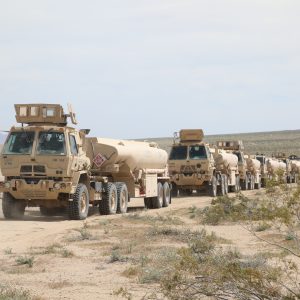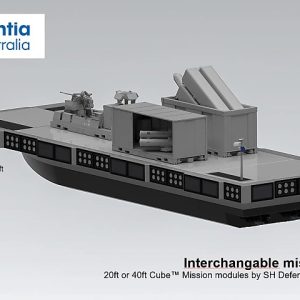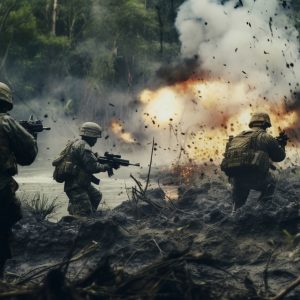As global power competition grows, U.S. nuclear deterrence policy is again in question. For decades, this policy has emphasized stability and continuity. Yet experts warn that the world has changed faster than U.S. strategy. Dr. Keith B. Payne, co-founder of the National Institute for Public Policy, leads a new study urging immediate change before adversaries exploit America’s strategic hesitation.
Key Facts
- Dr. Keith B. Payne calls for faster modernization of U.S. nuclear deterrence policy.
- Russia and China use nuclear threats to protect their regional aggression.
- The report recommends short-term “nuclear upload” to strengthen deterrence.
- Missile defense and secure command systems remain vital for stability.
Continuity meets crisis
Each U.S. administration gives its nuclear policy a new name. Terms like “strategic stability” or “integrated deterrence” suggest novelty but deliver little change. Payne argues that continuity now hides dangerous inertia. Plans made fifteen years ago assumed a peaceful world where Russia and China posed little risk. At that time, Washington saw nuclear arms control as the key to global security.
This optimism shaped both modernization plans and the New START Treaty. The 2010 Nuclear Posture Review even prioritized non-proliferation over deterrence. However, the world has moved in the opposite direction. “Great-power conflict was considered a thing of the past,” Payne notes. Yet history proved otherwise.
Strategic misreadings
Russia’s 2014 invasion of Ukraine ended the illusion of a cooperative world order. Western leaders expressed surprise, claiming that such behavior was outdated. Payne recalls Colin S. Gray’s warning that the post–Cold War calm was only a pause. Gray predicted a future shaped by U.S.–China rivalry and renewed Russian aggression. His predictions have now materialized.
Payne argues that Moscow and Beijing use nuclear weapons not only to deter attack but to cover offensive ambitions. This is nuclear coercion, not deterrence. It changes the logic of stability. Instead of preventing conflict, it enables aggression by threatening escalation if the West responds. This distinction is subtle in words but vast in meaning.
Arms control illusions
Despite clear violations of the New START Treaty, Washington still clings to arms control frameworks. Payne describes this as wishful thinking rooted in a “holiday from history.” He echoes Gray’s old conclusion: effective arms control is either “impossible or unimportant.” Russia’s long-standing advantage in non-strategic nuclear weapons illustrates this imbalance. It has weakened America’s extended deterrence and shaken allied confidence. As a result, nations like South Korea and Japan are reconsidering their nuclear options.
Choosing urgency over complacency
The study outlines three choices. The first is to redefine deterrence downward—claiming that less is enough. The second is to maintain the status quo and hope threats fade. The third is to act now and expand deterrence, following the 2023 Strategic Posture Commission’s urgent recommendations. Payne and his co-authors strongly support the third path.
Because modernization will take years, they propose “nuclear upload.” This means loading stored warheads onto existing submarines, missiles, and bombers. The U.S. could increase deployed warheads from about 1,660 to 2,200 under New START limits—or around 2,600 without them. Uploading would cost little compared with full modernization. It could be completed in months for submarines and within four years for intercontinental missiles. According to the Congressional Budget Office, expanding to past treaty limits would cost roughly $100 million—a modest price for greater deterrence.
Missile defense as a complement
Payne stresses that missile defense is not a substitute for offensive deterrence. Yet it can greatly enhance stability. Protecting nuclear command, control, and communications systems (known as NC3) ensures the survivability of retaliatory forces. That, in turn, strengthens deterrence. Critics have long argued that missile defense is destabilizing or ineffective. Payne disagrees. He notes that adversaries have already accelerated arms races for their own strategic aims. Therefore, expanding homeland defense will not trigger new escalation—it will simply catch up to reality.
Recognizing history’s return
The report ends on a stark note. The world now resembles the period before World War II, but the weapons are far more destructive. Payne cites Hedley Bull’s warning that history is “littered with catastrophe unthinkable to its victims.” Misreading history, he says, has left Washington unprepared. Correcting that error requires both humility and speed.
Strengthening U.S. nuclear deterrence policy does not mean embracing conflict. It means preventing one. Payne quotes Winston Churchill: “It is a mistake to mix up disarmament with peace.” Peace brings disarmament, not the reverse. Until rivals abandon their revisionist goals, deterrence must remain credible enough to convince them that aggression is never worth the cost.
References
- Paul Bracken, quoted in Payne, A New Strategic Review for a New Age: 2025.
- John Kerry remarks on Russia’s 2014 Ukraine invasion, U.S. State Department transcript.
- Colin S. Gray, Another Bloody Century, post–Cold War predictions of great-power rivalry.
- Congressional Budget Office, Projected Costs of U.S. Nuclear Forces 2020–2040.
- Hedley Bull, The Anarchical Society, 1977.
- U.S. State Department: Reports on Russian New START violations (2022–2024).
Internal link: Strategic Posture Commission 2023 Analysis
External link: Original article on RealClearDefense












